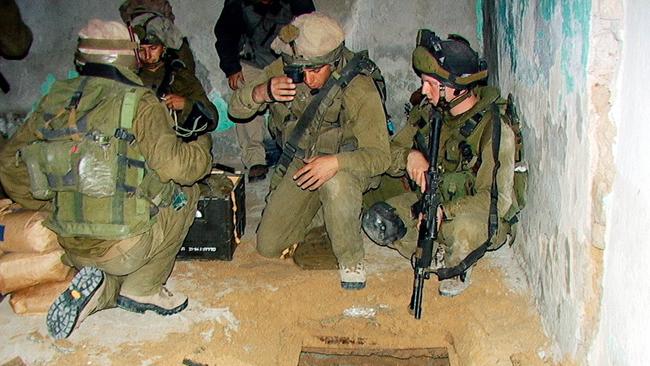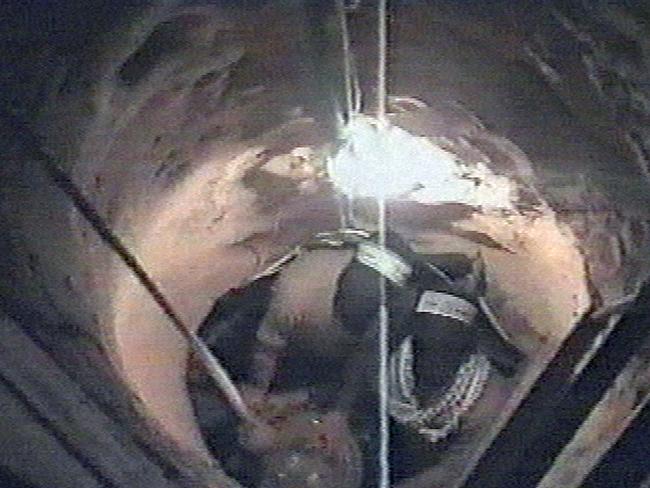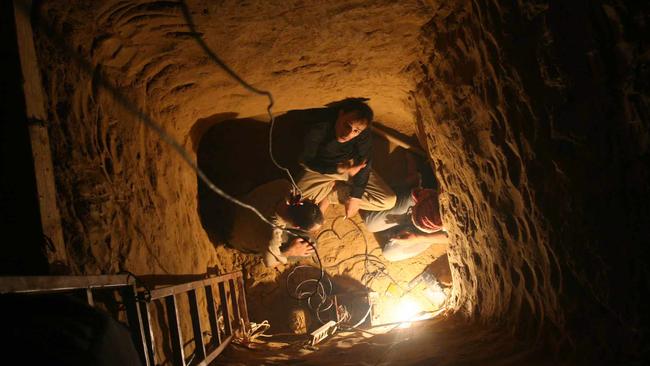Tunnel warfare: Armies have always dug deep to seek an advantage during wartime
From ancient Judea to modern Gaza, via Flanders and especially during the Vietnam War, underground conflict has a long and brutal history.

Between school and university, I worked briefly as a volunteer on an archaeological dig at Herodium in the West Bank, the ancient site of Herod the Great’s fortress south of Jerusalem. I shifted earth in a wheelbarrow for three weeks, got heatstroke and found nothing of any significance. But Ehud Netzer, the distinguished Israeli archaeologist overseeing the excavation, unearthed a lost world in 28 years of digging: a synagogue, a theatre and Herod’s tomb.
One of the most extraordinary discoveries at Herodium was a network of military tunnels, built between AD132 and 136 during the Jewish revolt against Roman rule in Judaea led by Simon bar Kokhba. The tunnel complex branched out from the fortress to hidden openings, from which the Jewish defenders could launch surprise attacks on Roman troops besieging the hill, before vanishing back underground.
The tunnels were remarkable feats of ancient engineering; underground avenues with high ceilings and timber beams enabling the swift and hidden movement of warriors to different parts of the battlefield.
Once lured into the dark passageways, the Romans could be ambushed and slaughtered. The tunnels connected with earlier cisterns, bringing in vital fresh water for the defenders.
The Jewish tunnellers had pioneered a new form of underground guerrilla warfare, forcing the Romans to develop new tactics: once a tunnel was discovered, a fire was lit at the entrance, smoking out or suffocating the occupants. Nonetheless, Bar Kokhba’s rebels managed to establish and maintain a Jewish state for about three years before the Romans put down the revolt.

Almost two millennia later, the Jewish state is facing the same military problem its forebears posed to the Romans; but in Gaza, and on an enormous scale.
Hamas has built a network of some 1300 tunnels, thought to be more than 500km in overall length, deep below the sandy soil of Gaza, a territory just 40km long and 10km wide. Iran and North Korea are believed to have aided in the construction. Hamas refers to its tunnel network as the Metro, concealing rockets, ammunition, hostages and the fighters themselves.
As the Romans discovered when battling their Jewish subterranean adversaries, this form of warfare is slow, unpredictable and terrifyingly claustrophobic.
Even the most advanced drones do not see 20m underground. Tanks cannot enter tunnels. Troops operating below ground cannot navigate by GPS or communicate by radio.
Like the Romans before them, the Israeli Defence Forces have adopted new methods, including ground-penetrating radar and remote-controlled robots to search out booby-traps. Elite underground Samur units (Hebrew for “weasel") have been trained in underground fighting and reconnaissance, using replica tunnels. If the mobile phone signal of a known Hamas militant suddenly disappears, that may betray the entrance to a tunnel.
Hamas’s tunnels were deliberately conceived to hit back against a better-armed adversary. As former Hamas leader Khaled Meshaal told an interviewer in 2014: “In light of the balance of power, which is shifted toward Israel, we had to be creative in finding innovative ways. The tunnels were one of our innovations.”

Tunnel warfare has a long and brutal history. Medieval sappers tunnelled under fortifications to undermine the walls, but it took the invention of gunpowder and the wars of the 20th century to turn the earth below ground into a battlefield.
During the trench warfare of the First World War, both sides tunnelled under no-man’s land to lay explosives beneath the enemy, a technique that reached a peak with the 8km tunnel built under German lines at Messines, in which 600 tonnes of explosives were detonated on June 7, 1917, killing 10,000 people in an explosion audible in London.
The Chinese pioneered new ways to fight underground during the Sino-Japanese War, which the Japanese further developed in the Pacific War, notably at Iwo Jima, where Mount Suribachi was riddled with a honeycomb of tunnels for defence and attack.
During the Vietnam War, the North Vietnamese turned tunnels into a highly effective guerrilla weapon, and a way of life. The Viet Cong’s hundreds of kilometres of deep tunnels were used as hiding places but also communication and supply routes, hospitals, kitchens, food and weapons caches, living quarters and even a theatre for the North Vietnamese fighters. The troglodyte troops stayed underground during the day, coming out at night to scavenge for food, tend crops or engage the enemy.
Clearing a purpose-built military tunnel is exceptionally difficult. The so-called “tunnel rats” sent in to flush out the Viet Cong faced explosive booby-traps, poison gas, punji stake traps and tethered venomous snakes. Gas, water, grenades and hot tar were all used to try to force the Viet Cong into the open, with limited effect: many tunnels were built with ventilation systems and trap doors.

Yet even the Viet Cong’s subterranean world is dwarfed by the sophisticated military warren built by Hamas. The first tunnels were built to smuggle weapons, supplies and fighters under Gaza’s borders but in the past decade the network has expanded hugely to form an underground fortress, communications system, weapons depot, training ground and prison.
The multi-branch arteries have multiple entry and exit points, often concealed inside buildings, mosques or chicken coops, as well as dead-ends and internal blocking points in case of attack. The larger tunnels, lined with reinforced concrete, are equipped with lights, electricity and tracks for transporting materials. Like the Jewish tunnels of the second century, these holes have been designed to lure the enemy into them.
Israel’s Prime Minister, Benjamin Netanyahu, has vowed to “destroy the infrastructure” of Hamas but that is a monumental task, since so much of this lies underground, out of sight and heavily defended. Finding and demolishing the Gaza tunnel network could take months, even years.
The first stage of this war was a land attack, in Israel; the current chapter is airborne, conducted by missile and airstrike; the third and final phase of the conflict in Gaza will be fought, fiercely and invisibly, beneath it.
The Times


